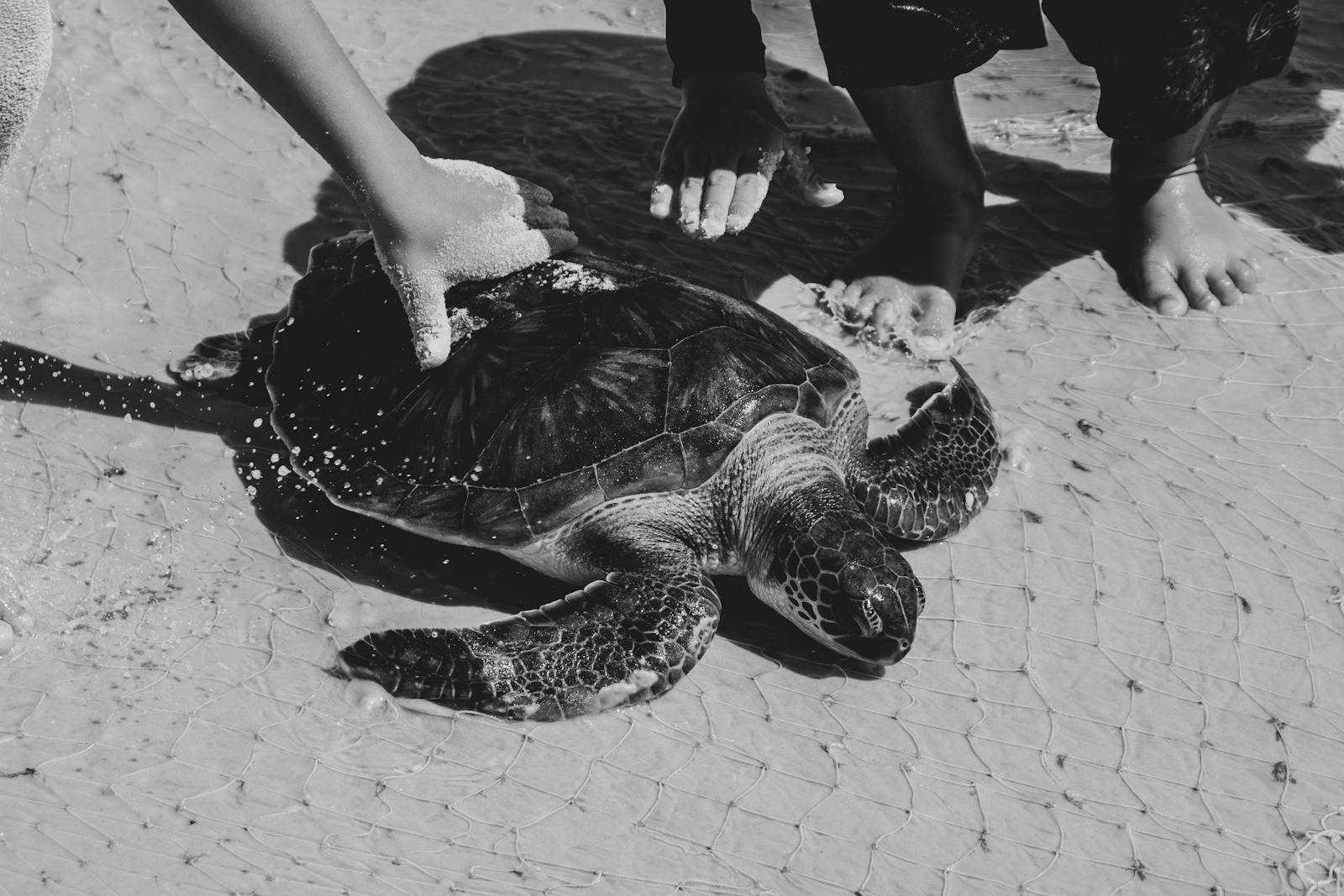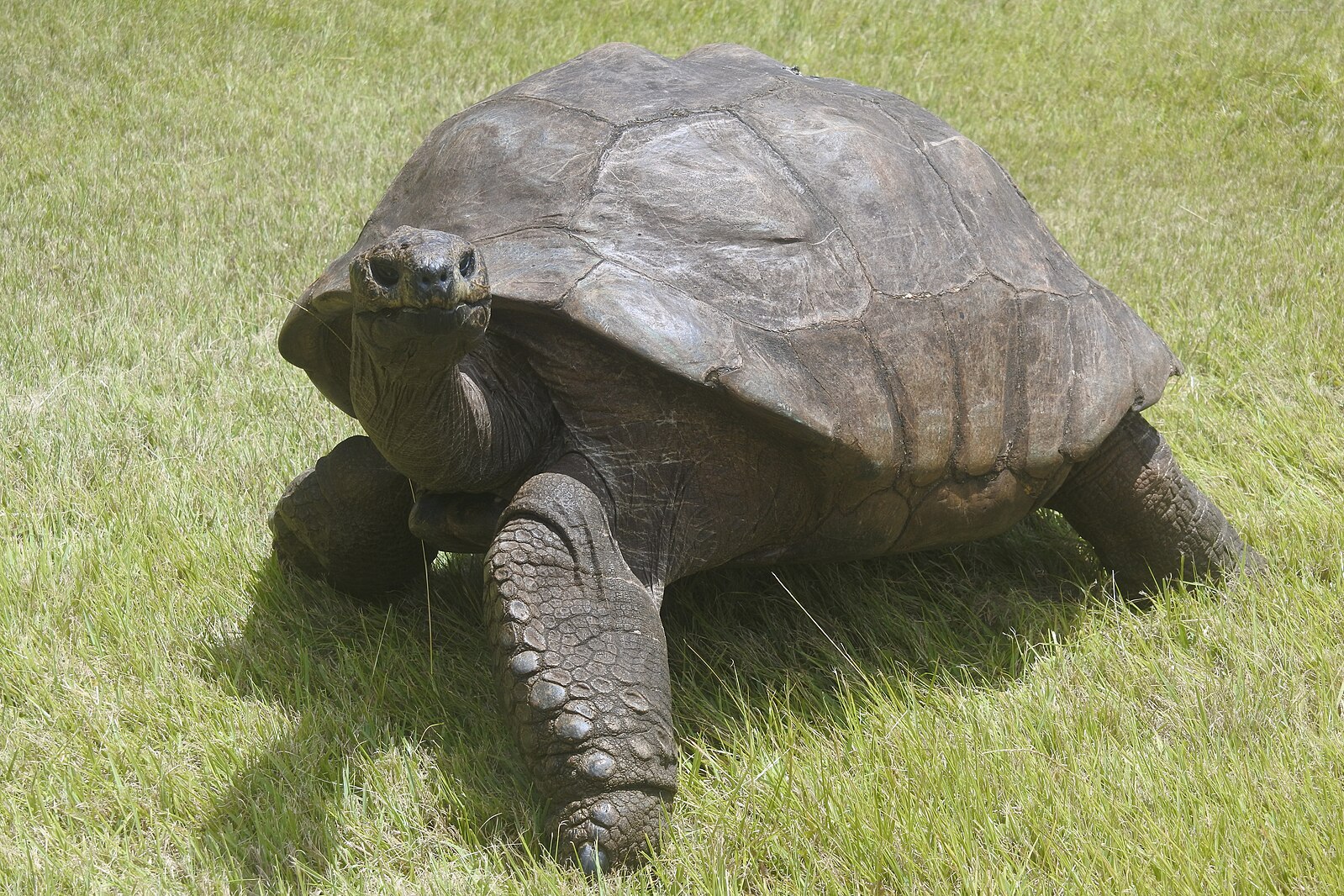In the mysterious world of herpetology, some stories unfold like nature’s own version of resurrection narratives. Across remote islands, dense rainforests, and unexplored terrains, reptile species once declared extinct have dramatically reappeared, challenging our understanding of biodiversity and resilience. These “Lazarus species” – named after the biblical figure who rose from the dead – offer profound hope for conservation efforts worldwide. Their rediscoveries not only rewrite scientific records but also provide crucial second chances at preservation. From tiny lizards to imposing crocodilians, these remarkable comebacks represent some of the most captivating chapters in modern zoology and remind us that sometimes, what we believe lost may simply be hiding beyond our view.
The Coelacanth: Not a Reptile, But the Original “Living Fossil”
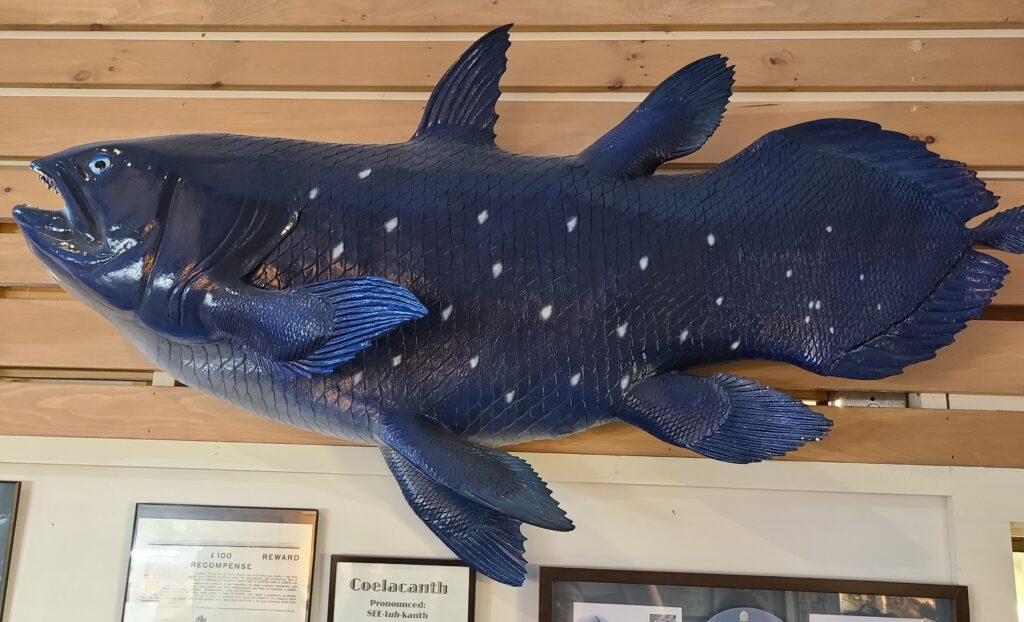
While not technically a reptile (it’s a lobe-finned fish), the coelacanth deserves honorable mention as it set the precedent for “living fossil” rediscoveries that would later include many reptiles. Scientists believed this ancient fish had disappeared with the dinosaurs until 1938, when museum curator Marjorie Courtenay-Latimer discovered one in a fishing net off South Africa’s coast. The scientific community was utterly stunned – it was equivalent to finding a living dinosaur. The coelacanth’s rediscovery fundamentally changed how scientists approach extinction declarations, establishing the possibility that other species might similarly persist unseen for millions of years. This landmark case opened researchers’ minds to the concept that apparent extinctions might sometimes represent our failure to find elusive species rather than their actual disappearance.
The La Palma Giant Lizard: Vanished for 500 Years
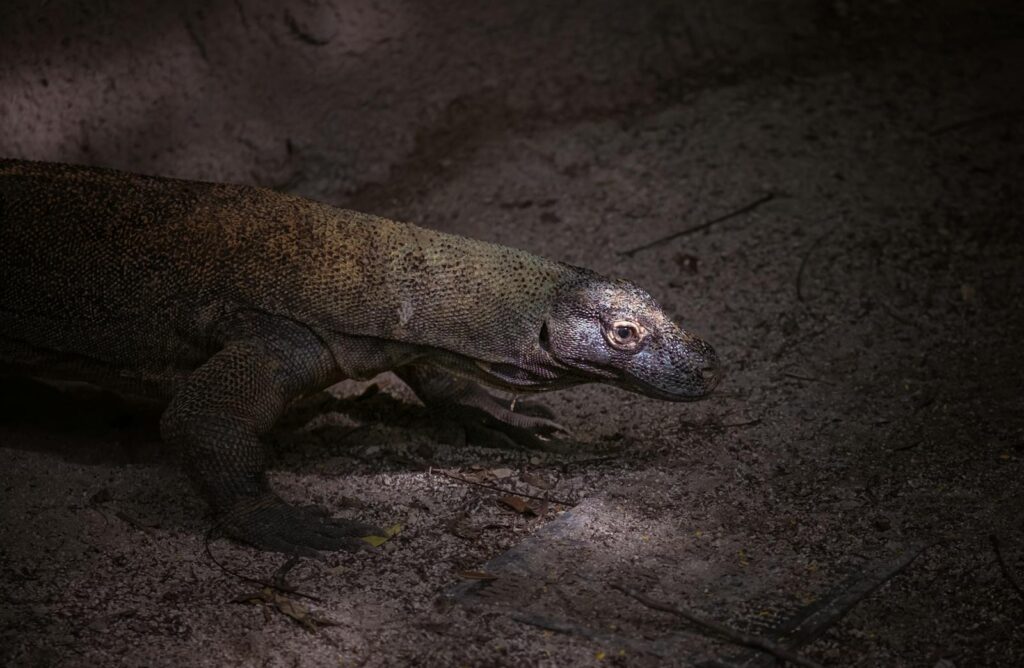
The La Palma Giant Lizard (Gallotia auaritae) represents one of the most remarkable rediscoveries in reptile history. After disappearing from scientific records around the time of Spanish colonization in the 15th century, this Canary Islands native was presumed extinct for over 500 years. In 2007, researchers were astounded when several specimens were confirmed in the rugged volcanic terrain of La Palma island. Growing up to 2 feet long, these impressive lizards had somehow managed to maintain a small population despite centuries of human settlement, introduced predators, and habitat destruction. Their rediscovery prompted immediate conservation efforts, including captive breeding programs and habitat protection measures. The La Palma Giant Lizard now serves as a living testament to the resilience of island species against seemingly insurmountable odds.
The Terror Skink: Named for Its Fearsome Appearance
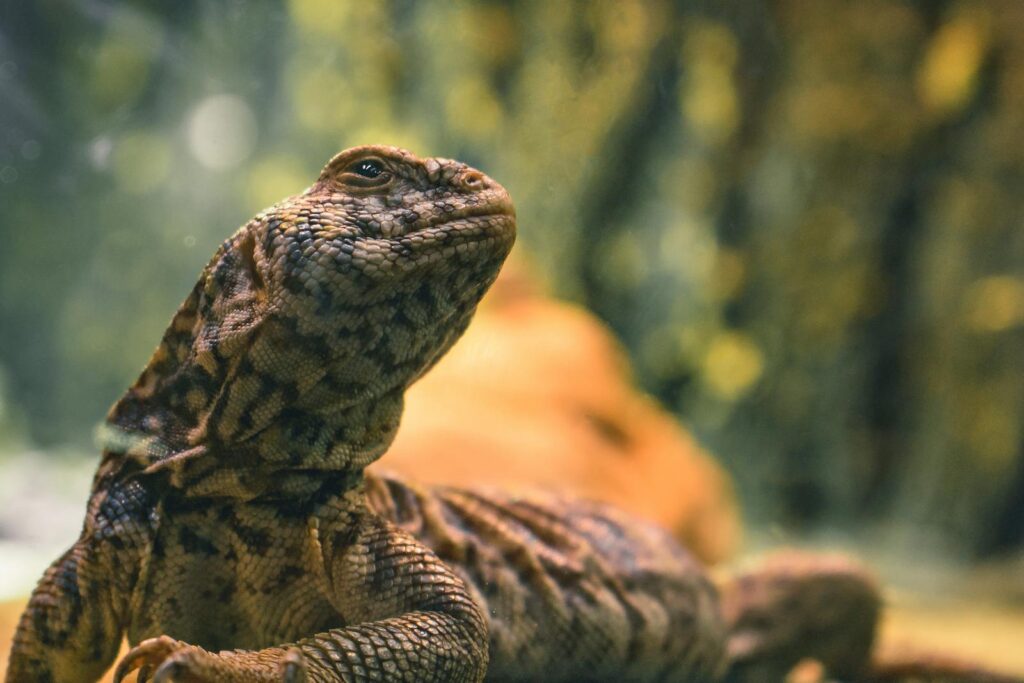
The Terror Skink (Phoboscincus bocourti) of New Caledonia earned its intimidating name due to its curved, fang-like teeth and predatory nature – unusual features for a skink. First described in 1876 from a single specimen, the species seemed to vanish afterward, leading scientists to declare it extinct by the early 20th century. Then, in 2003, after more than 100 years without documentation, a French expedition on the tiny island of Île des Pins encountered a living Terror Skink, sending shockwaves through the herpetological community. The large lizard, measuring over 50 centimeters long, was photographed, temporarily captured for documentation, and then released. Further surveys have confirmed a small surviving population, though the species remains critically endangered. The Terror Skink’s rediscovery highlights how even relatively large, distinctive reptiles can escape scientific detection for centuries in remote locations.
The Rio Apaporis Caiman: Hidden in Plain Sight
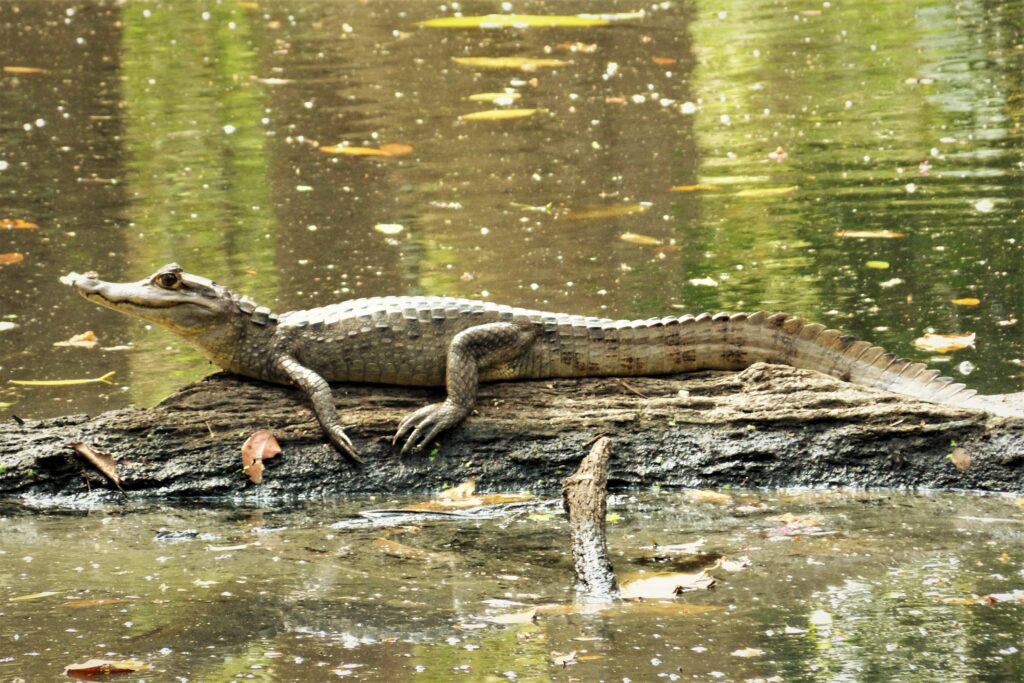
The Rio Apaporis Caiman (Caiman crocodilus apaporiensis) represents a fascinating case where a reptile was hidden not in remote wilderness but in scientific confusion. This subspecies of spectacled caiman, native to southeastern Colombia’s river systems, was described in 1955 but subsequently fell into scientific obscurity, with many researchers assuming it had gone extinct due to habitat loss and hunting. Decades passed without confirmed sightings until 2019, when an international team conducting surveys in the Amazon basin positively identified several specimens matching the original description. What makes this rediscovery particularly interesting is that local indigenous communities had never stopped encountering these animals – the scientific “extinction” was largely due to taxonomic uncertainty and limited research access to politically unstable regions. The Rio Apaporis Caiman’s story demonstrates how extinction declarations sometimes reflect human knowledge gaps rather than actual biological status.
The New Caledonian Crested Gecko: From Extinct to Pet Trade Phenomenon
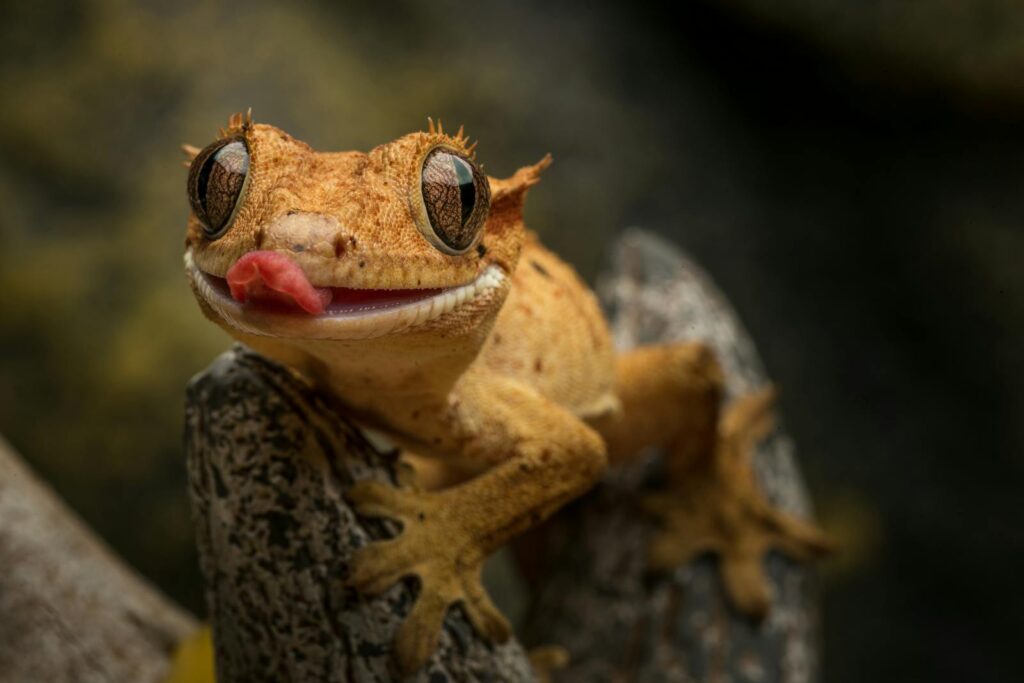
The New Caledonian Crested Gecko (Correlophus ciliatus) has perhaps experienced the most dramatic status reversal of any rediscovered reptile. Described in 1866 but not seen again for over 100 years, this distinctive gecko was widely presumed extinct until 1994, when it was rediscovered during an expedition following a tropical storm on the South Pacific island of New Caledonia. What happened next was unprecedented – the species went from “extinct” to becoming one of the most popular reptile pets worldwide in less than two decades. The crested gecko’s adorable appearance, docile temperament, and relatively straightforward care requirements fueled its popularity in the exotic pet trade. Ironically, this former “extinct” species is now bred in such numbers in captivity that it may help ensure the survival of the species, as wild populations remain threatened by habitat destruction and introduced predators. The crested gecko’s journey represents both conservation success and cautionary tale about the fragility of island ecosystems.
The Pygmy Blue-Tongued Skink: Discovered in a Snake’s Stomach
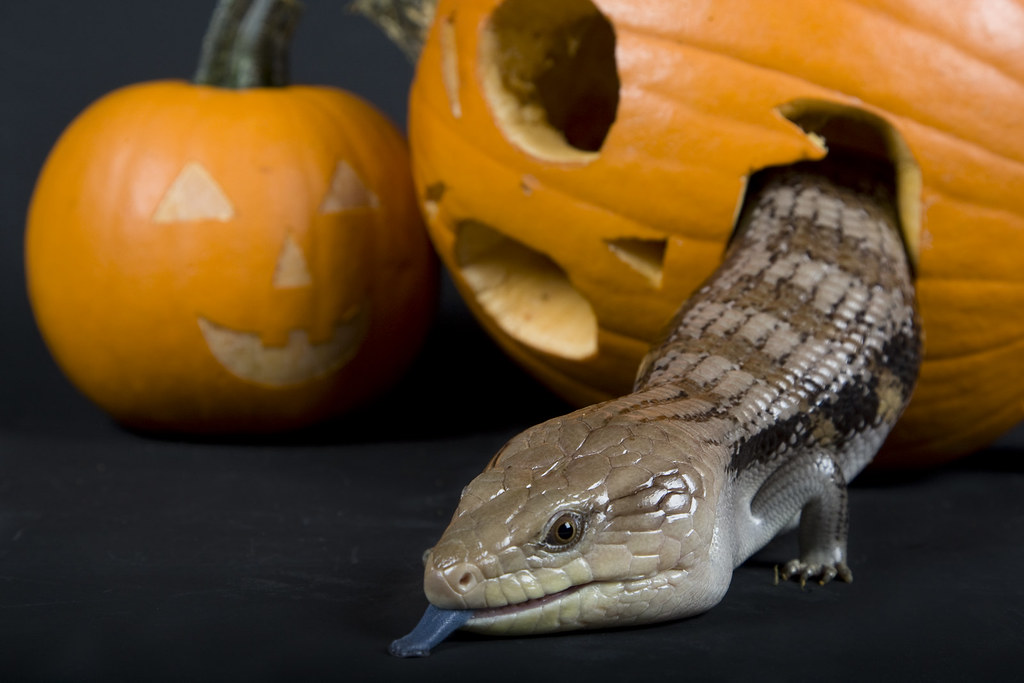
The rediscovery of the Pygmy Blue-Tongued Skink (Tiliqua adelaidensis) came about through one of the strangest circumstances in herpetological history. Native to South Australia, this small lizard was known only from museum specimens collected in the 1800s and was declared extinct in the 1990s after decades without sightings. In 1992, a researcher examining the stomach contents of a brown snake made an astonishing discovery – inside was an intact Pygmy Blue-Tongued Skink. This macabre finding sparked renewed search efforts, eventually revealing small populations surviving in native grasslands. The skink’s diminutive size (about 10 cm), secretive nature, and the conversion of its habitat to agricultural land had made it virtually invisible to researchers for over a century. Now critically endangered, this skink lives almost exclusively in spider burrows and rarely ventures to the surface, explaining its long absence from scientific observation. The skink’s rediscovery highlights the importance of preserved habitat fragments and the sometimes bizarre circumstances through which “extinct” species re-enter scientific awareness.
The Bermuda Rock Skink: Island Survivor Against All Odds
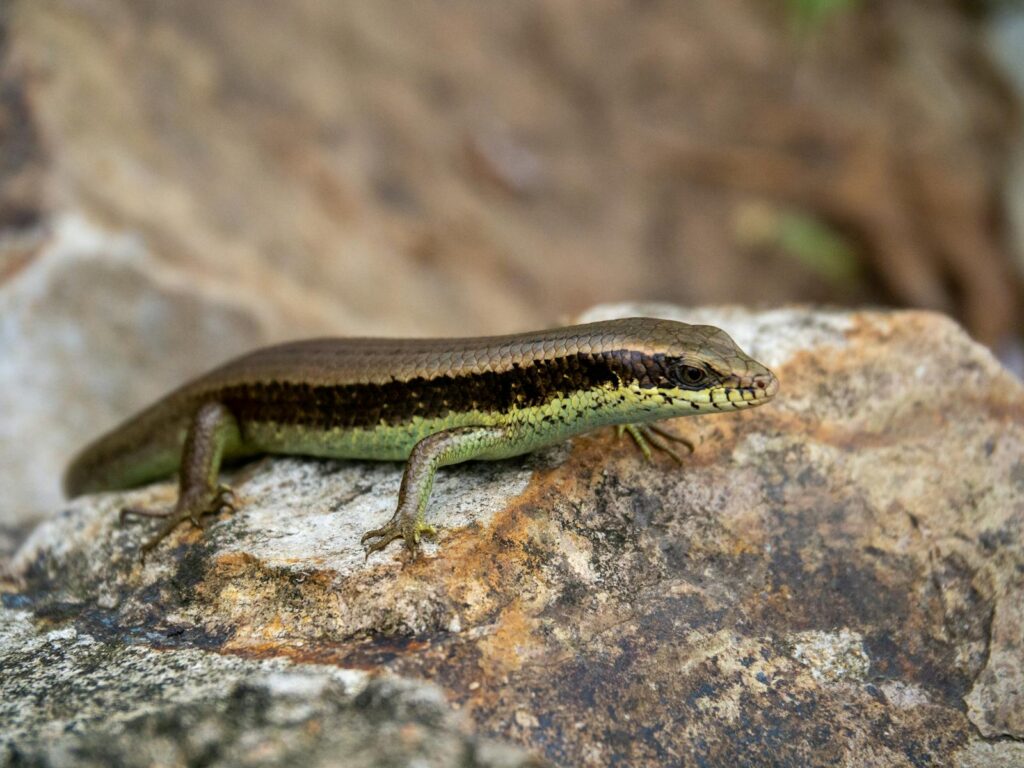
The Bermuda Rock Skink (Plestiodon longirostris) demonstrates remarkable persistence in one of the world’s most densely populated islands. First described in the mid-19th century, this endemic lizard was believed extinct by the 1960s, seemingly another casualty of Bermuda’s extensive development and introduced predators. In 1969, a small population was discovered surviving on several tiny offshore islets, sparking conservation interest. Further surveys found scattered populations on the main island as well, though in extremely limited numbers. The skink’s survival is particularly impressive considering Bermuda’s transformation from a natural paradise to a heavily developed tourist destination with extensive habitat modification. Today, intensive conservation efforts include captive breeding, habitat restoration, and predator control programs to save this resilient reptile from a second extinction. The Bermuda Rock Skink’s rediscovery reminds us that even in heavily modified landscapes, determined species can sometimes find refuge in the smallest habitat fragments.
The Fernandina Island Galápagos Tortoise: A Century in Hiding
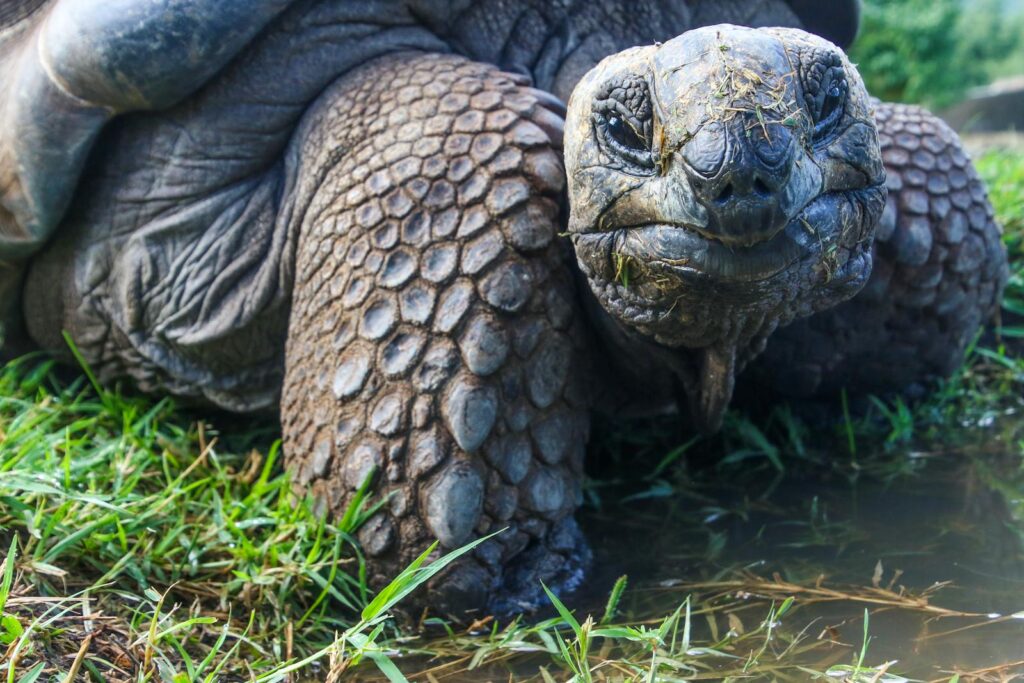
The Fernandina Island Galápagos Tortoise (Chelonoidis phantasticus) represents one of the most recent and significant reptile rediscoveries. Known only from a single male specimen collected in 1906, this tortoise was long presumed extinct until February 2019, when an adult female was discovered during an expedition on Fernandina Island. The finding stunned the scientific community – how could such a large, distinctive reptile remain undetected on a relatively small volcanic island for over a century? Genetic testing confirmed the female belonged to the supposedly extinct species, providing hope that additional individuals might exist in the remote, largely unexplored highlands of the island. The tortoise was transferred to a breeding center on Santa Cruz Island as researchers plan further expeditions to locate additional specimens. The fact that such a large reptile could remain hidden for so long in the well-studied Galápagos archipelago serves as a powerful reminder of nature’s capacity to surprise even in relatively accessible locations.
The Laotian Rock Rat: A Living Fossil That Bridges Reptile History
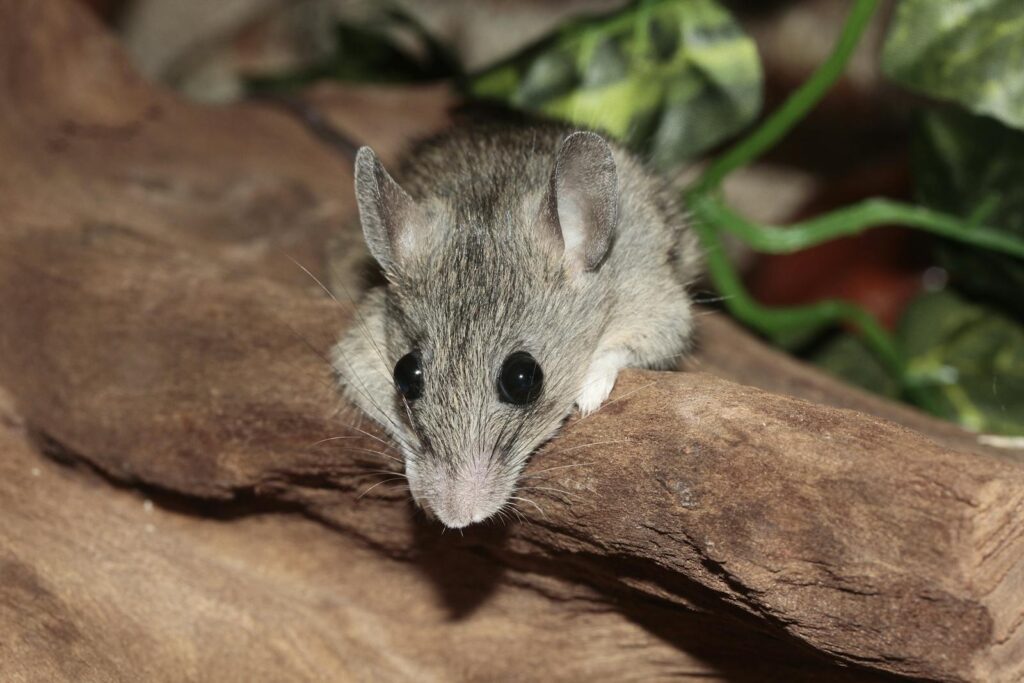
While technically a rodent rather than a reptile, the Laotian Rock Rat (Laonastes aenigmamus) deserves mention because its rediscovery revolutionized how scientists approach extinction timelines across animal groups, including reptiles. Discovered in a Laotian meat market in 1996, this unusual rodent represented a family (Diatomyidae) thought extinct for 11 million years, previously known only from fossils. This spectacular rediscovery prompted herpetologists to reassess extinction assumptions for several reptile lineages, particularly in Southeast Asia’s karst landscapes. The concept of “gap species” – animals that disappear from the fossil record for millions of years only to reappear as living specimens – gained new credibility. This conceptual shift led directly to intensified searches for presumed-extinct reptiles in places like Vietnam, Laos, and Cambodia, resulting in several remarkable reptile rediscoveries in subsequent years. The Laotian Rock Rat case fundamentally changed scientific thinking about extinction timeframes and expanded the temporal horizons for possible reptile rediscoveries.
The Union Island Gecko: From Scientific Discovery to Endangered in Record Time
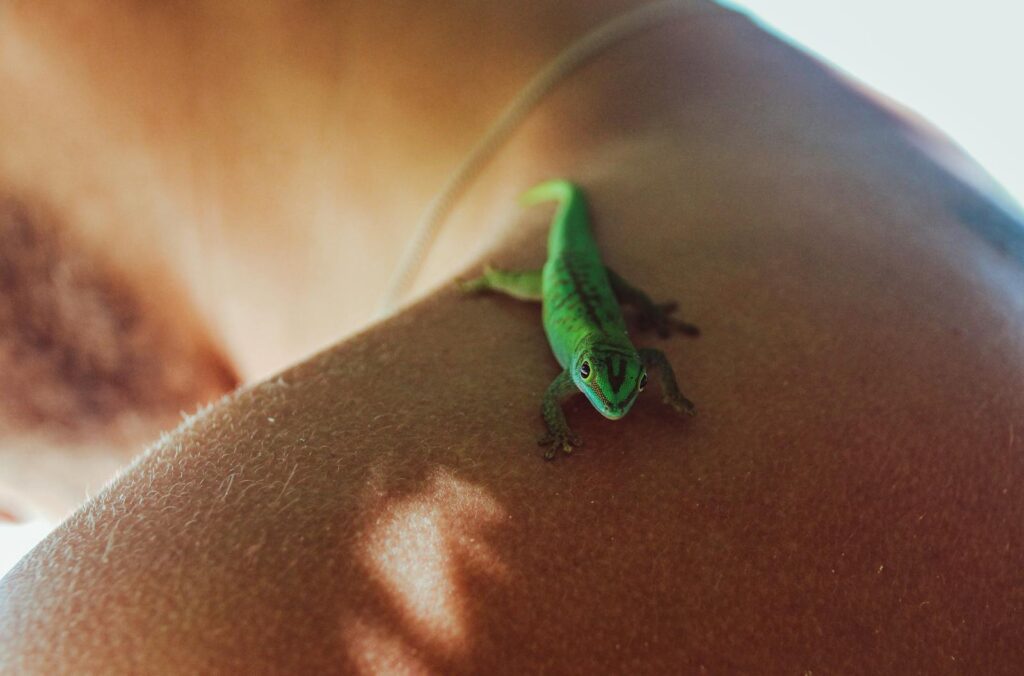
The Union Island Gecko (Gonatodes daudini) represents a unique case where a reptile was discovered, presumed extinct, and then rediscovered in rapid succession. First described scientifically in 2005 from the tiny Caribbean island of Union Island (part of St. Vincent and the Grenadines), this brilliantly colored gecko quickly attracted attention from wildlife collectors due to its electric-blue spots and relatively limited range. By 2010, intensive illegal collection for the pet trade had apparently wiped out known populations, and researchers feared it might be extinct before meaningful conservation measures could be implemented. In 2015, a targeted expedition located a small surviving population in a remote section of the island, estimated at fewer than 800 individuals. The gecko’s rediscovery spurred emergency conservation actions, including local protected areas and CITES Appendix I listing to combat trafficking. This colorful lizard’s roller-coaster journey from discovery to presumed extinction to rediscovery illustrates the accelerating threats facing newly discovered reptile species in the internet age.
The Arakan Forest Turtle: A Delicacy Reappears
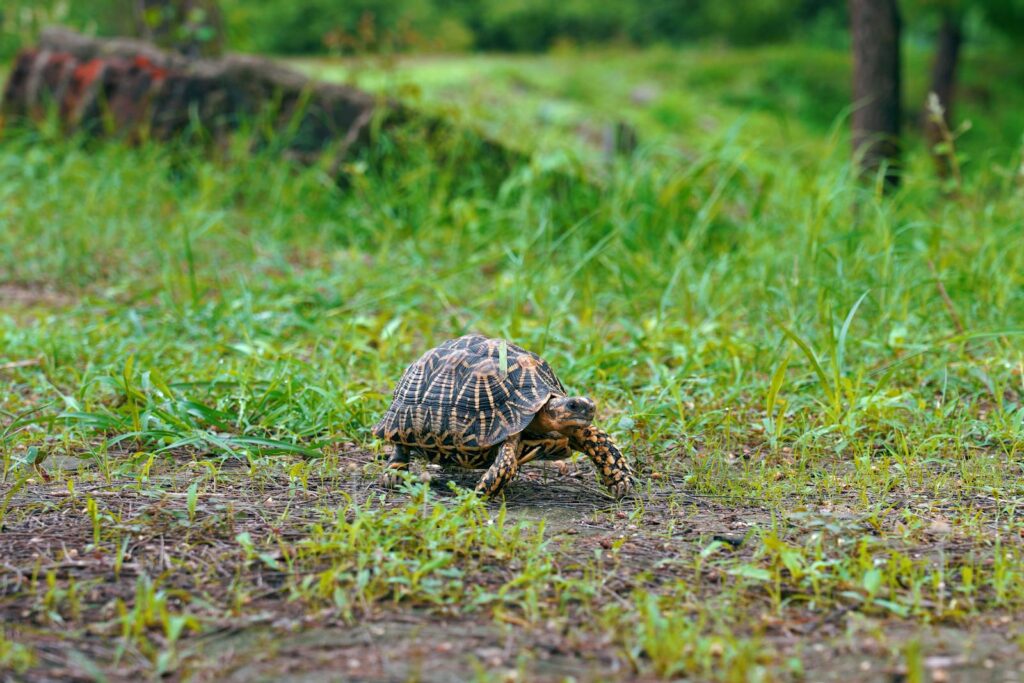
The Arakan Forest Turtle (Heosemys depressa) disappeared from scientific records shortly after its description in 1875, leading many to assume it had gone extinct during the extensive deforestation of its native Myanmar. For 120 years, this elusive chelonian existed only as a scientific memory, represented by a handful of museum specimens. Then, in 1994, wildlife researchers made a shocking discovery at a food market in China – several living Arakan Forest Turtles being sold for consumption. This marketplace rediscovery prompted targeted searches in Myanmar’s remaining forests, eventually locating a small wild population. Ironically, the same human activity that threatened the species – collection for food – led to its scientific rediscovery. Today, conservation breeding programs at several zoological institutions work to increase population numbers of this critically endangered turtle. The turtle’s rediscovery illustrates how sometimes extinct species reappear not through scientific expeditions but through monitoring of wildlife trade – a now-essential component of reptile conservation efforts.
The Campbell’s Alligator Lizard: Benefit of Rural Knowledge
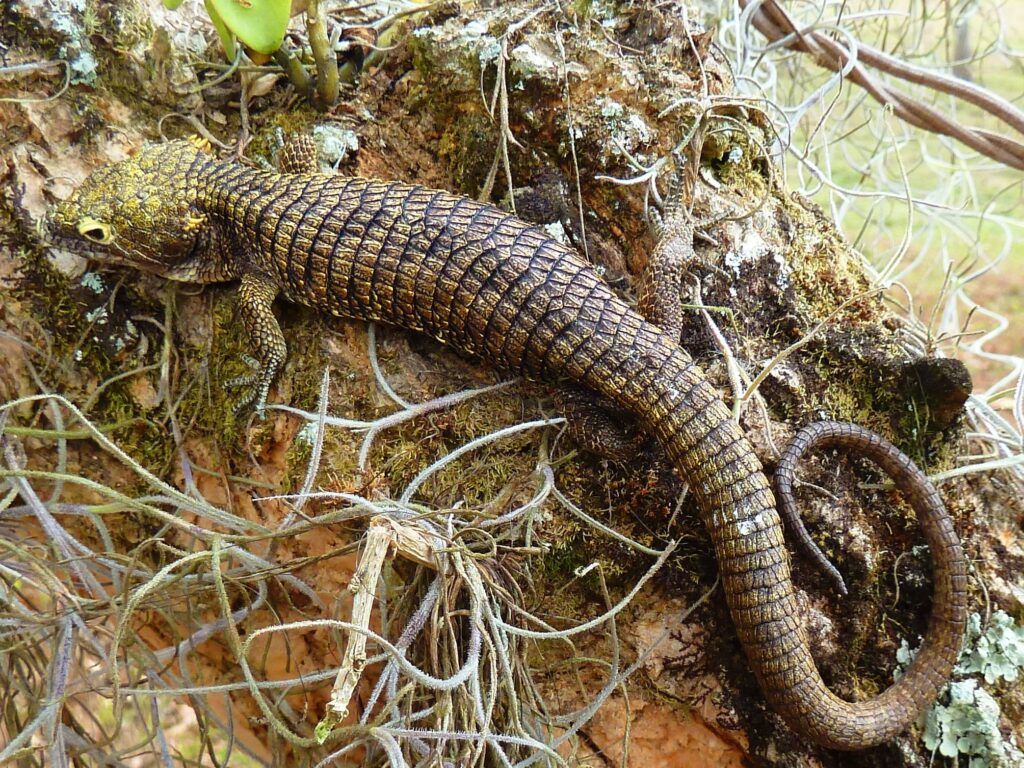
Campbell’s Alligator Lizard (Abronia campbelli) showcases how local knowledge often precedes scientific rediscovery of supposedly extinct reptiles. First described in 1942 from Guatemala’s western highlands, this distinctive lizard disappeared from scientific records during decades of civil unrest that made biological surveys dangerous or impossible. By the 1980s, it was widely presumed extinct due to extensive deforestation in its limited range. In 2009, herpetologists interviewing rural communities about local wildlife were surprised when villagers described occasionally encountering these distinctive arboreal lizards in remnant cloud forest patches. Following local guides, researchers successfully located several specimens, confirming the species’ survival. Subsequent studies revealed Campbell’s Alligator Lizard had persisted in forest fragments considered too degraded to support specialized reptiles. Today, community-based conservation programs work with villages to protect remaining habitat and monitor populations. This rediscovery underscores the critical importance of integrating indigenous and rural knowledge into scientific efforts to locate supposedly extinct species.
The Impact of Rediscoveries on Conservation Science

The reappearance of supposedly extinct reptiles has profoundly influenced contemporary conservation science in several ways. First, these rediscoveries have prompted the development of more rigorous protocols for declaring species extinct, with the IUCN now requiring extensive surveys across multiple seasons before such designations can be made. Second, “rediscovery ecology” has emerged as a specialized field, with researchers developing targeted methodologies for locating cryptic or rarely-seen species, including environmental DNA sampling, specialized camera traps, and predictive habitat modeling to prioritize search areas. Third, these second chances have generated valuable data on the minimum viable population sizes and habitat requirements necessary for long-term survival, as many rediscovered species persisted for decades with remarkably small populations. Finally, these comeback stories have provided powerful conservation narratives that resonate with the public and policymakers, demonstrating that extinction is not always inevitable when human action intervenes. The scientific ripple effects of these reptilian rediscoveries extend far beyond herpetology into broader biodiversity conservation practices worldwide.
Conclusion
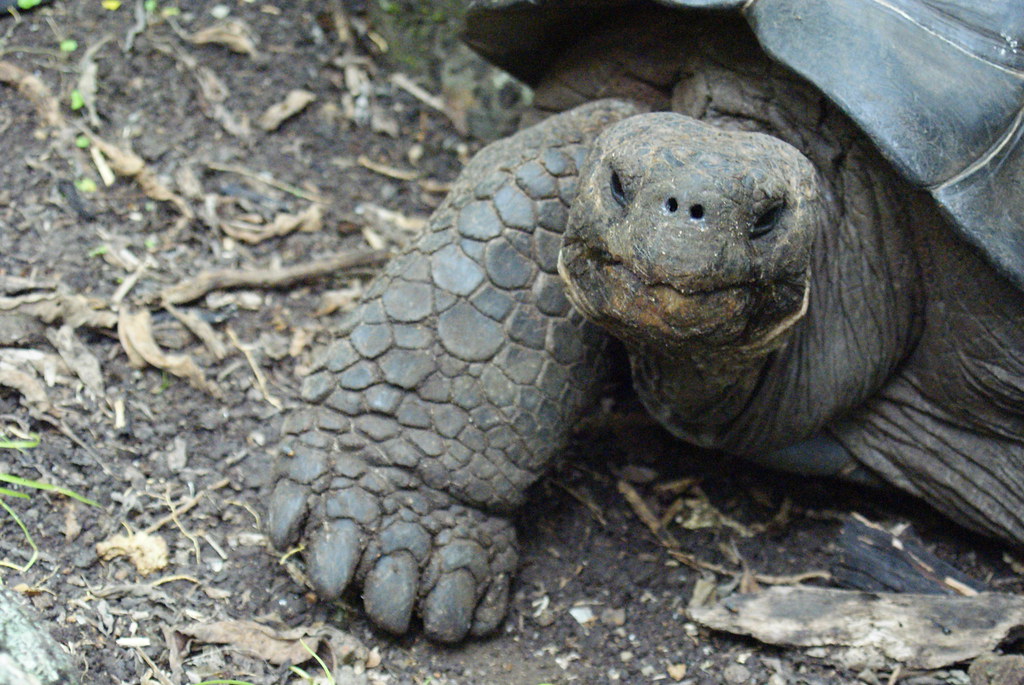
The rediscovery of supposedly extinct reptile species represents far more than biological curiosities or scientific corrections. These remarkable comebacks offer tangible hope in an era of biodiversity crisis, demonstrating nature’s resilience when given even the slightest opportunity to persist. From tiny geckos to imposing tortoises, each rediscovered species provides crucial insights into survival thresholds, habitat requirements, and conservation priorities. These living reminders of our incomplete knowledge of Earth’s biodiversity challenge us to approach extinction declarations with appropriate humility while intensifying search efforts for other missing species. As climate change and habitat destruction continue to threaten reptiles worldwide, these Lazarus species serve as powerful symbols of why conservation efforts matter — even when prospects seem bleakest. In their remarkable journeys from “extinct” to “endangered but extant,” these reptiles remind us that sometimes, against all odds, what we believe lost can be found again.


